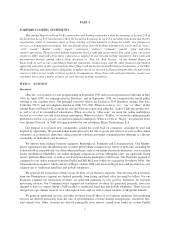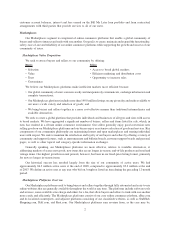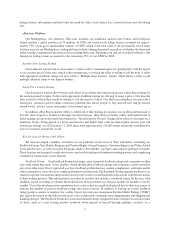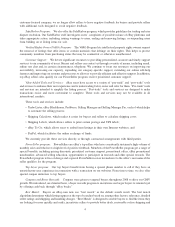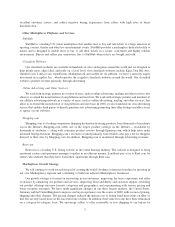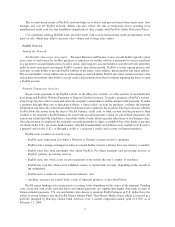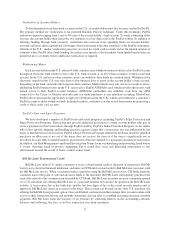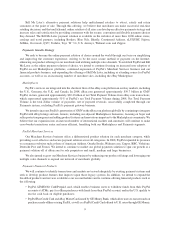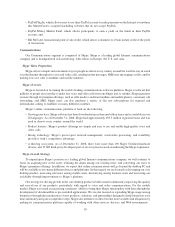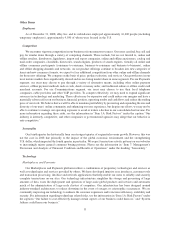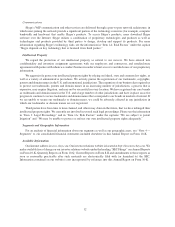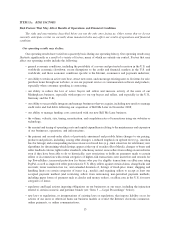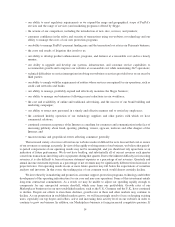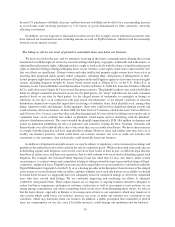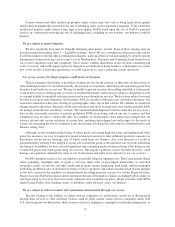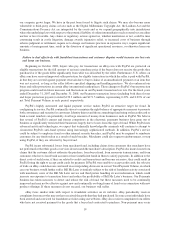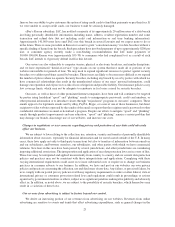eBay 2008 Annual Report Download - page 19
Download and view the complete annual report
Please find page 19 of the 2008 eBay annual report below. You can navigate through the pages in the report by either clicking on the pages listed below, or by using the keyword search tool below to find specific information within the annual report.Other Items
Employees
As of December 31, 2008, eBay Inc. and its subsidiaries employed approximately 16,200 people (including
temporary employees), approximately 9,950 of whom were located in the U.S.
Competition
We encounter vigorous competition in our businesses from numerous sources. Our users can find, buy, sell and
pay for similar items through a variety of competing channels. These include, but are not limited to, online and
offline retailers, distributors, liquidators, import and export companies, online and offline auctioneers, catalog and
mail-order companies, classifieds, directories, search engines, products of search engines, virtually all online and
offline commerce participants (consumer-to-consumer, business-to-consumer and business-to-business), online
and offline shopping channels and networks. As our product offerings continue to broaden into new categories of
items and new commerce formats, we expect to face additional competition from other online and offline channels
for those new offerings. We compete on the basis of price, product selection, and services. Our growth rates in our
most mature markets have significantly slowed and we are losing market share in some segments. For our Payments
segment, our users may choose to pay through a variety of alternative means, including other online payment
services, offline payment methods such as cash, check or money order, and traditional online or offline credit card
merchant accounts. For our Communications segment, our users may choose to use their local telephone
companies, cable providers and other VoIP providers. To compete effectively, we may need to expend significant
resources in technology and marketing. These efforts may be expensive and could reduce our margins and have a
materially adverse effect on our business, financial position, operating results and cash flows and reduce the trading
price of our stock. We believe that we will be able to maintain profitability by preserving and expanding the size and
diversity of our users’ online community and enhancing our user experience, but despite our efforts, we may not be
able to continue to manage our operating expenses to avoid or reduce a decline in our consolidated net income. For
more information regarding these risks, see the information in “Item 1A: Risk Factors” under the caption “Our
industry is intensely competitive, and other companies or governmental agencies may allege that our behavior is
anti-competitive.”
Seasonality
Our fourth quarter has historically been our strongest quarter of sequential revenue growth. However, this was
not the case in 2008 due primarily to the impact of the global economic environment and the strengthening
U.S. dollar, which impacted the fourth quarter in particular. We expect transaction activity patterns on our websites
to increasingly mirror general consumer buying patterns. Please see the information in “Item 7: Management’s
Discussion and Analysis of Financial Condition and Results of Operations” under the heading “Seasonality.”
Technology
Marketplaces and Payments
Our Marketplaces and Payments platforms utilize a combination of proprietary technologies and services as
well as technologies and services provided by others. We have developed intuitive user interfaces, customer tools
and transaction processing, database and network applications that help enable our users to reliably and securely
complete transactions on our sites. Our technology infrastructure simplifies the storage and processing of large
amounts of data, eases the deployment and operation of large-scale global products and services and automates
much of the administration of large-scale clusters of computers. Our infrastructure has been designed around
industry-standard architectures to reduce downtime in the event of outages or catastrophic occurrences. We are
continually improving our technology to enhance the customer experience and to increase efficiency, scalability and
security. For information regarding technology related risks, see the information in “Item 1A: Risk Factors” under
the captions “Our failure to cost-effectively manage certain aspects of our business could harm us,” and “System
failures could harm our business.”
11


